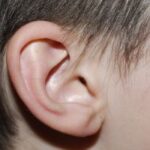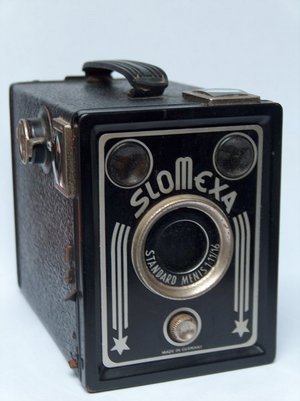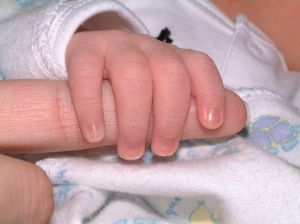Simple tests Two ways of roughly assessing a person’s ability to hear are with the use of a watch, or by the ‘whisper test’. In the former, a ticking watch is held behind the patient and move progressively closer to the ear. The patient signals when it is first audible. The person holding the watch can compare the hearing of both ears, and also his own, to detect any differences.
The ‘whisper test’ involves blocking one of a person’s ears and whispering near the other, slowly raising the volume of sound until it is heard.
Type of Deafness
Deafness or loss of hearing may be cause by blockage of the sound waves reaching the inner ear, or by damage to the nerves that carry the impulses of sounds to the part of the brain responsible for their interpretation.
Accumulation of ear wax in the outer ear canal is the most common cause of partial blockage of sound vibrations. More serious causes involve the ear drum or middle ear cavity, and include glue ear (thick fluid being present in the normally air-filled space of the middle ear), and otosclerosis (abnormal thickening of the bone or ossicles of the middle ear). These conditions produce conductive deafness. When the cochlea or nerves of hearing are damaged, it is known as perceptive (or nerve or neural) deafness.
Tests to determine type of deafness A tuning fork can be used to differentiate between conductive and perceptive deafness. A vibrating tuning fork (one which vibrates at 256 Hz-that is middle C) is placed with its base against the bone of the skull that lies just behind the ear. It is then moved so that the vibrating pork is next to the ear canal. The patient is then asked which sounds appears to be the louder. Usually the eardrum and ossicles of the middle ear provide more efficient conduction than the bones on the skull. However if there is significant conductive deafness, the vibrations will be heard well when the tuning fork is held behind the ear. If the ear is normal, or there is some form of perceptive (nerve) deafness, vibrations will be heard better when the fork is held next to ear. This is called the Rinne test.
The vibrating fork can also be placed in the center of the forehead. If there is conductive deafness in one ear, the vibration will be heard more clearly on that side because of better bone conduction. Nerve deafness in one ear will result in the vibrations being heard well in the ear on the other side. This is called the Weber’s test.
The audiogram The most frequently used test is the audiogram. Headphones are worn, and pure tone sounds of varying pitch (frequency) are played alternatively through each side. The operator controls the loudness and the patient indicates the level of sound at which he can first hear it
The test is then repeated using a special speaker placed behind the ear to assess bone conduction. The results are plotted on a graph, called an audiogram. The type and extent of hearing loss at each frequency is noted. From this information the selection of appropriate treatment, such as a hearing aid, can be made.
Test of particular problems The ability to understand speech or ‘speech discrimination’ can be assessed by wearing headphones and repeating series of words or phrases with a measured degree of difficulty. This helps in assessing the probable effectiveness of a hearing aid and whether special tuition may be helpful.
Tympanometry involves placing a tightly fitting tube into the external ear canal. A measured pressure of air is then introduced into the canal. The recoil (degree of movement) produced in the tympanic membrane or eardrum is then measured. This test differentiates the various problems that may occur in the middle ear cavity, especially glue ear and otosclerosis.
These and other highly technical tests of hearing and ear function determine the nature and extent of any problem present, and assist in the planning of appropriate treatment.




